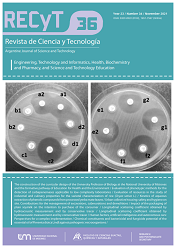Factores humanos, inteligencia artificial y autos autónomos: Perspectivas para una implementación compleja
Contenido principal del artículo
Resumen
La relación humano / automóvil casi inseparable de siglos de antigüedad se enfrenta a una revolución gracias a la inteligencia artificial - IA. Gradualmente creando nuevos paradigmas en términos de movilidad urbana personal. Aun así, ¿estaríamos preparados para ceder completamente el control de nuestros vehículos a sistemas autónomos? El objetivo de este trabajo es dilucidar los elementos principales de la compleja relación entre los factores humanos y la inteligencia artificial en el desarrollo y establecimiento de vehículos autónomos. Así, adoptamos una metodología básica con carácter cualitativo, con un objetivo exploratorio, así como procedimientos técnicos de naturaleza documental y bibliográfica. Tenga en cuenta que los sistemas autónomos presentan un funcionamiento plausible en entornos controlados, sin embargo, en un entorno con una cantidad relevante de variables y una posibilidad casi infinita de combinaciones, ha forzado la ocurrencia de fallas y ha comprometido la estructuración de un modelo mental, basado en factores humanos, aplicable a la inteligencia artificial. Esto se debe a la poca importancia dada a los factores humanos en la planificación de las interacciones humano / máquina autónoma.
Descargas
Detalles del artículo
La Revista de Ciencia y Tecnología sostiene su compromiso con las políticas de Acceso Abierto a la información científica, al considerar que tanto las publicaciones científicas como las investigaciones financiadas con fondos públicos deben circular en Internet en forma libre y gratuita. Los trabajos publicados en la Revista de Ciencia y Tecnología están bajo la licencia Creative Commons Atribución-NoComercial 2.5 Argentina.
Aceptado 2021-07-20
Publicado 2021-11-15
Citas
Azmat, M.: Future Scenario: Self-driving cars – the future has already begun. Viena, Unpublished (2015).
Bellman, R. E.: An introduction to artificial intelligence: Can computers think?. Boyd and Fraser, San Francisco (1978).
Bhise, V. D.: Ergonomics in the automotive design process, CRC Press, New York (2011).
Bobrow, D.: Dimensions of interaction, http://www.aaai.org/ojs/index.php/aimagazine/article/view/904/822, (1991).
Brownlee, J.: How ui/ux design will map the future of self-driving cars. https://www.fastcompany.com/3052738/how-ui-ux-design-will-map-the-future-of-self-driving-cars, (2015).
Castelfranchi, C.: Modelling social action for AI agents. Artificial Intelligence. vol 103, issues 1-2, pp. 157-182 (1998).
Chapanis, A.; garner, W.; Morgan, C. Historical foundations of human factors, in Human Factors in Simple and Complex Systems (2018), Robert W. Proctor, Trisha Van Zandt, Eds., pp. 3, Boca Raton (1949).
Craik, K.: The nature of explanation. Cambridge University Press, London (1943).
ETSI Technical Committee Human Factors.: Human Factors (HF); Intelligent Transport Systems (ITS); ICT in cars, Report No.: ETSI TR 102 762 v1.1.1., Grasse (2010).
Fagnant, D.J., Kockelman, K.M.: Preparing a nation for autonomous vehicles: Oportunities, barriers and policy recommendation. ENO Center for Transportation, Washington (2013).
Floridi, L. The 4th revollution: How the infosphere is reshaping human reality, Oxford Press, New York (2014).
Gehrig, S. K., Stein, F.J.: Dead reckoning and cartography using stereo vision for an autonomous car. Proceedings 1999 IEEE/RSJ International Conference on Intelligent Robots and Systems. Human and Environment Friendly Robots with High Intelligence and Emotional Quotients, pp. 1507-1512. IEEE Press, New York (1999).
Helander, M.: A guide to human factors and ergonomics, CRC Press, Boca Raton (2006).
Howley, D. I.: The Race to Build Self-Driving Cars, https://www.laptopmag.com/articles/high-tech-cars-go-mainstream-self-driving-in-car-radar-more, (2012).
IEEE.: You won’t need a driver’s license by 2040, http://sites.ieee.org/itss/2014/09/15/you-wont-need-a-drivers-license-by-2040/.
Jordan, M. I., Russel, S.: Computational intelligence. The MIT encyclopedia of the cognitive sciences, p.74-91, London (1999).
Ju, W., Leifer, L.: The design of implicit interactions: Making interactive systems less obnoxious. Design Issues, vol. 24, No. 3, pp 72-84. MIT Press, Cambridge (2018).
Karwowski, W. “The discipline of human factors and ergonomics” in Handbook of Human Factors and Ergonomics, G. Salvendy, Ed., pp. 3, Hoboken (2012).
Kurzwell, R.: The age of intelligent machines. MIT Press, Cambridge (1990).
Little, C.: The intelligent vehicle initiative: Advancing “human-centered” smart vehicle. Federal Highway Administration Research and Technology. https://www.fhwa.dot.gov/publications/publicroads/97septoct/p97sept18.cfm, (1997).
McBurney, P., Parsons, S.: Dialogue games for agent argumentation. Argumentation in Artificial Intelligence. p. 261-280, Edinburgh (2009).
Mihaylov, M.: Men love for cars: desire to control or real emotions?, https://www.montway.com/blog/men-love-for-cars-desire-to-control-or-real-emotions, (2016).
Nathan, S.: Autos on autopilot: the evolution of the driverless car, https://www.theengineer.co.uk/issues/august-2013-online/autos-on-autopilot-the-evolution-of-the-driverless-car/#ixzz2hJHF31Q3, (2013).
NHTSA.: U.S. Department of Transportation Releases Policy on Automated Vehicle Development, https://www.transportation.gov/briefing-room/us-department-transportation-releases-policy-automated-vehicle-development, Washington (2013).
Nilsson, N. J.: Artificial intelligence: a new synthesis. Morgan Kaufmann, San Francisco (1998).
Norman, D.: The Design of Future Things. BasicBooks, New York (2009).
Pomerleau, D. A.: ALVINN: an autonomous land vehicle in a neural network. https://kilthub.figshare.com/articles/ALVINN_an_autonomous_land_vehicle_in_a_neural_network/6603146/1, (2018).
Quinn, B.: Men love cars ‘because they’re part of them, https://www.telegraph.co.uk/news/uknews/1557297/Men-love-cars-because-theyre-part-of-them.html, (2007).
Reisberg, D.: Learning. The MIT encyclopedia of the cognitive science. pp. 460-461. London (1999).
Russel, S. J., Norving, P.: Artificial intelligence: a modern approach; Pearson, New Jersey (2009).
Schneider, W.: Automaticity. The MIT encyclopedia of the cognitive science. pp. 63-64. London (1999).
Schoettle, B., Sivak, M.: A survey of public opinion about autonomous and self-driving vehicles in the U.S., the U.K., and Australia, UMTRI-2014-21, Ann Arbor (2014).
Schwab, K. The fourth industrial revolution, Currency, Redfen (2016).
Shoham, Y., Tennenholtz, M.: On social laws for artificial agent societies: offline design. Artificial Intelligence, vol. 73, No. 1-2, pp 231-252. https://www.sciencedirect.com/science/article/pii/000437029400007, (1995).
U.S. Department of Transportation: DOT fact sheets highlight grim state of U.S. roads and bridges. https://www.transportation.gov/briefing-room/dot-fact-sheets-highlight-grim-state-us-roads-and-bridges, (2015).
Ünsal, C.: Intelligent navigation of autonomous vehicles in an automated highway system: Learning methods and interacting vehicles approach. Faculty of the Virginia Polytechnic Institute and State University (1997).
Winograd, T.: Thinking machines: can there be? Are we?. The foundations of artificial intelligence: a sourcebook. pp. 167-189, New York (1990).
Winston, P. H.: Artificial intelligence. Pearson, Englewood (1992).
Yang, J., Coughlin, J. F.: In-vehicle technology for self-driving cars: Advantages and challenges for aging drivers. International Journal of Automotive Technology. Cambridge (2014).

